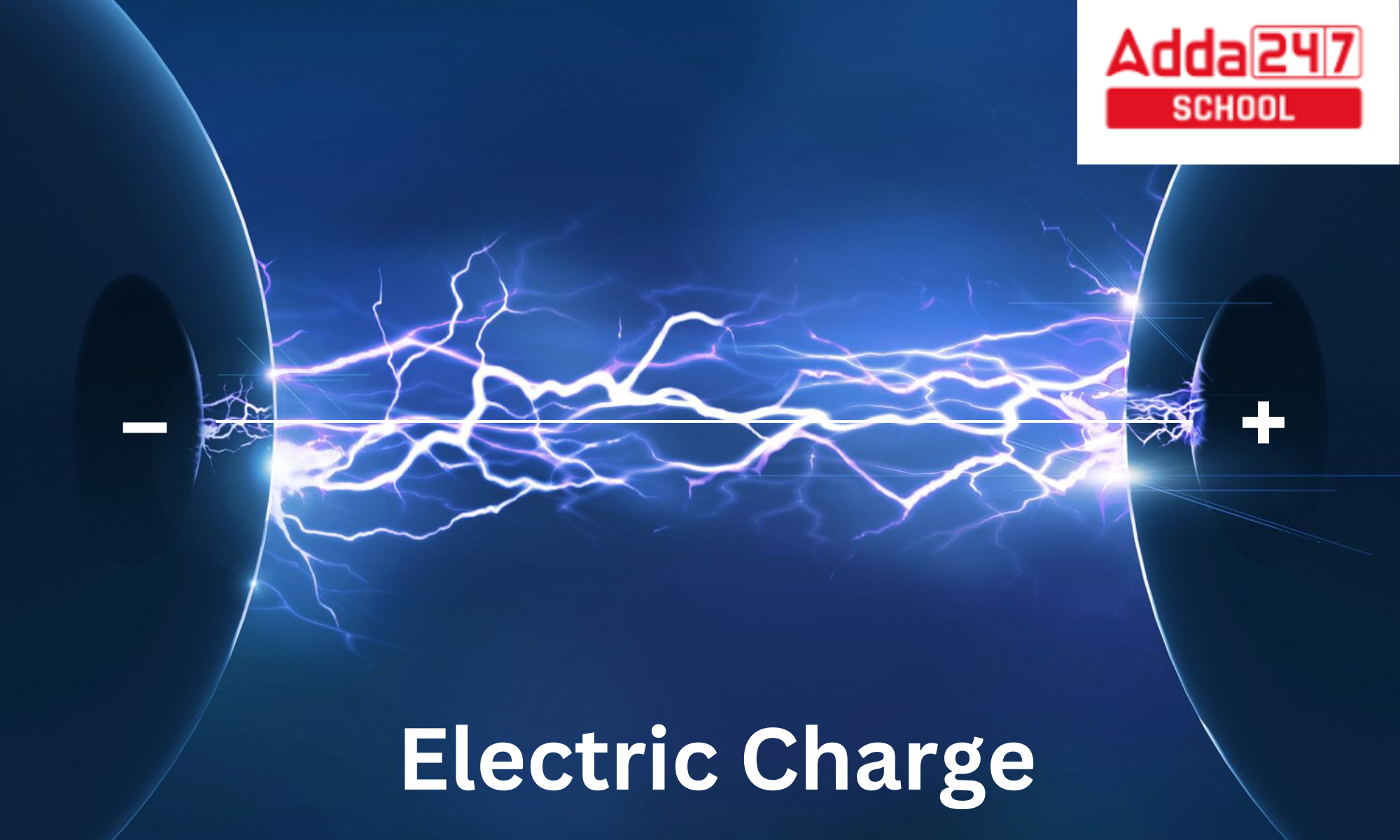What is Electric Charge?
Electric charge is a conserved attribute, meaning that the net charge—that is, the sum of the positive and negative charges in an isolated system—cannot change. Subatomic particles carry an electric charge. In the nuclei of atoms, protons have positive charge and electrons carry negative charge in normal matter. A substance will have a negative charge if it has more electrons than protons, a positive charge if there are fewer, and a neutral charge if there are an equal amount of each. Charge is quantized; it comes in integer multiples of the elementary charge, e, which is approximately 1.602 × 10-19 C.
Electric Charge Definition
The physical characteristic of matter that causes it to feel a force when exposed to an electromagnetic field is called electric charge. Charged material experiences a force when it is exposed to an electromagnetic field due to the physical property of electric charge. You can have a positive or negative electric charge. Unlike charges attract one another while like charges repel one another. Neutral refers to an object that carries no net charge.
Electric Charge and Field- Examples
The physical field that surrounds electrically charged particles and exerts force on all other charged particles in the field, either attracting or repelling them, is known as an electric field (E-field). It can also refer to a system of charged particles’ physical field. Electric charges and time-varying electric currents are the building blocks of electric fields. One of the four fundamental interactions of nature, the electromagnetic field, manifests as both electric and magnetic fields.
Electric Field Lines
What Is The Unit Of Current, Resistance And Voltage?
SI Unit of Electric Charge
Coulomb is the SI unit of Electric Charge. The coulomb, the electrical charge unit of the metre-kilogram-second-ampere system, which forms the foundation of the SI system of physical units. It is referred to as C. The amount of power carried by a one-ampere current in a second is known as a coulomb.
Electric Charge of an Electron
The mass of an electron is roughly 1/2000 that of a neutron or proton, and it has an electric charge of 1. The letter e is typically used to represent electron charge. It is a fundamental physical constant that is used to express the 1.602 × 10-19 coulomb, which is the unit of naturally occurring electric charge.
| Charge of an Electron = -1.602 × 10-19 C = – e |
Electric Charge of proton
Protons have a mass of 1 atomic mass unit (amu), or around 1.671027 kilogrammes, and a positive electrical charge of 1 (+1), and equivalent to 1.602 × 10-19 coulomb.
| Charge of Proton = +1.602 × 10-19 C = + e |
Electric Charge of Neutron
A neutron is a neutral particle since it has no charge. The neutron, represented by the letter “n,” has a mass of 1. 67493 10 – 27 kg. A nucleus’ mass is dependent on the quantity of protons and neutrons inside.
| Charge of Neutron = 0 C |
Mass Of Electron, Proton, And Neutron In G, Kg, Mev, Amu
Electric Charge Dimensional Formula
As we know that, Electric charge (Q) = current (I) × time (T)
Here Dimension of Mass (M) is 0, dimension of Length (L) is 0, dimension of Current (I) is 1, and dimension of time (T) is 1.
Therefore, the dimensional formula of electric charge is:
| [M0 L0 T1 I1] |
Electric Charge: FAQs
Ques. What is an electric charge in physics?
Ans. Charge, also known as electric charge, electrical charge, or electrostatic charge and denoted by the symbol q, is a property of a unit of matter that indicates how many more or fewer electrons than protons it contains.
Ques. What is electric charge in simple sentence?
Ans. A quantity of electricity that is contained in or transported by something is known as an electric charge. A current flowing at 1 ampere for 1 second will carry 1 coulomb of electric charge.
Ques. What is electric charge example?
Ans. The ability to conduct electricity is a characteristic of many fundamental, or subatomic, components of matter. As an illustration, protons and neutrons both have positive charges but electrons have a negative charge.
Ques. What is electric charge class 10th?
Ans. The physical characteristic of matter that causes it to feel a force when exposed to an electromagnetic field is called electric charge. The two types of electric charges that protons and electrons most frequently carry are positive and negative charges.
Ques. What are types of charges?
Ans. Positive charge and negative charge are the only forms of electric charges that exist.
Also Read:
- What Is Hybridization?- Sp3, Sp2, Examples And Formula
- What Is A Stethoscope?- Its Parts, Uses, & Diagram
- Parallel Axis Theorem, Proof, Definition, Formula, Examples
- Oscillatory Motion, Meaning, Definition, Example, Diagram
- Planets Name In English And Hindi
- Human Eye Definition, Diagram, Structure
- All About Father Of Genetics- Gregor Mendel
- 7 Rainbow Colours Name In Order, Drawing, Vibgyor Meaning









 CBSE Admit Card 2026 for Private & R...
CBSE Admit Card 2026 for Private & R...
 AILET 2026 AIR 1: Check Full Toppers Lis...
AILET 2026 AIR 1: Check Full Toppers Lis...
 AILET Result 2026 OUT, How to Download S...
AILET Result 2026 OUT, How to Download S...














